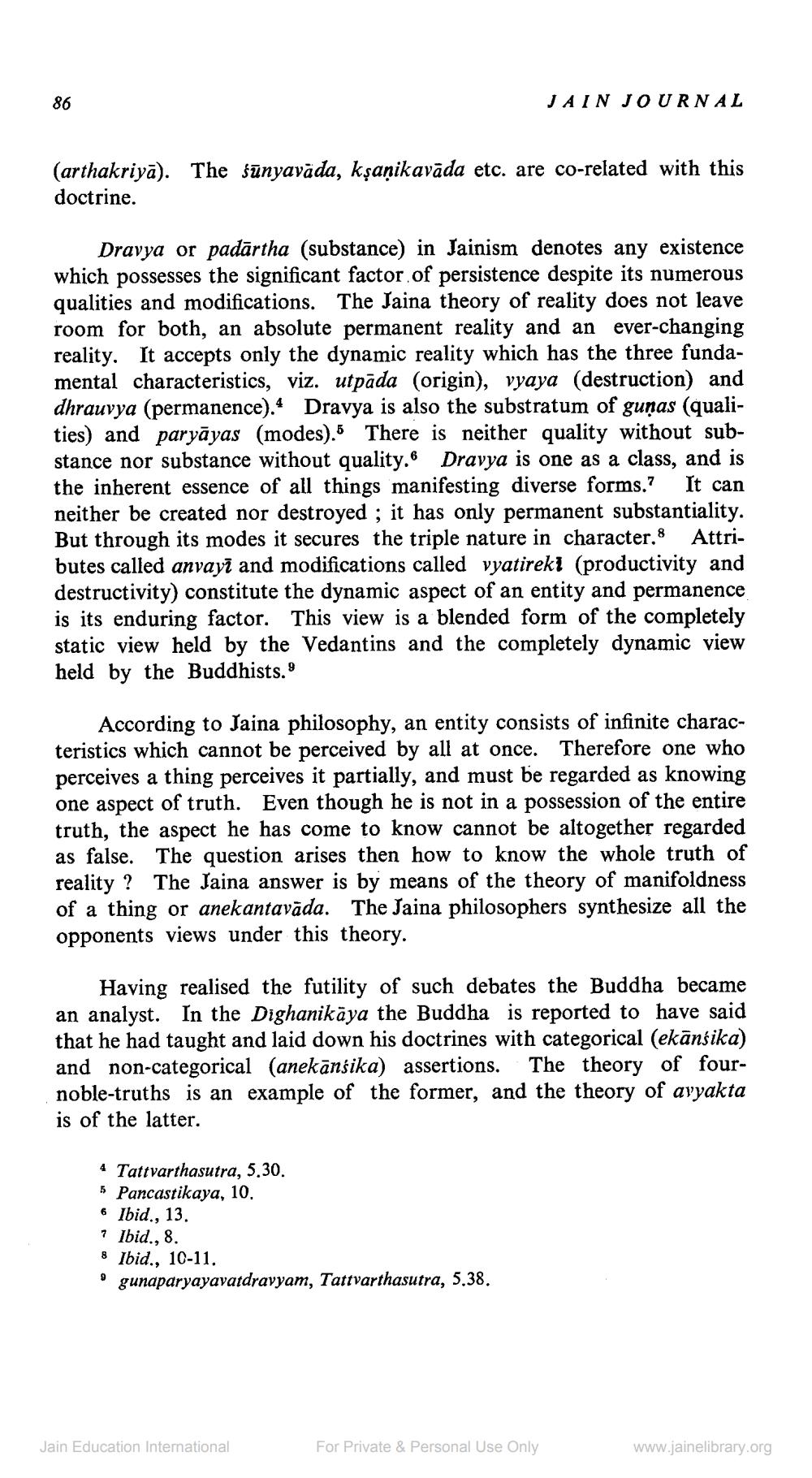Book Title: Jain Journal 1981 01 Author(s): Jain Bhawan Publication Publisher: Jain Bhawan Publication View full book textPage 9
________________ 86 (arthakriya). The sunyavada, kṣaṇikavāda etc. are co-related with this doctrine. Dravya or padartha (substance) in Jainism denotes any existence which possesses the significant factor of persistence despite its numerous qualities and modifications. The Jaina theory of reality does not leave room for both, an absolute permanent reality and an ever-changing reality. It accepts only the dynamic reality which has the three fundamental characteristics, viz. utpāda (origin), vyaya (destruction) and dhrauvya (permanence). Dravya is also the substratum of gunas (qualities) and paryāyas (modes). There is neither quality without substance nor substance without quality. Dravya is one as a class, and is the inherent essence of all things manifesting diverse forms." It can neither be created nor destroyed; it has only permanent substantiality. But through its modes it secures the triple nature in character. Attributes called anvayi and modifications called vyatireki (productivity and destructivity) constitute the dynamic aspect of an entity and permanence is its enduring factor. This view is a blended form of the completely static view held by the Vedantins and the completely dynamic view held by the Buddhists." According to Jaina philosophy, an entity consists of infinite characteristics which cannot be perceived by all at once. Therefore one who perceives a thing perceives it partially, and must be regarded as knowing one aspect of truth. Even though he is not in a possession of the entire truth, the aspect he has come to know cannot be altogether regarded as false. The question arises then how to know the whole truth of reality? The Jaina answer is by means of the theory of manifoldness of a thing or anekantavāda. The Jaina philosophers synthesize all the opponents views under this theory. Having realised the futility of such debates the Buddha became an analyst. In the Dighanikaya the Buddha is reported to have said that he had taught and laid down his doctrines with categorical (ekānśika) and non-categorical (anekānsika) assertions. The theory of fournoble-truths is an example of the former, and the theory of avyakta is of the latter. 4 Tattvarthasutra, 5.30. 5 Pancastikaya, 10. 6 Ibid., 13. 7 Ibid., 8. 9 JAIN JOURNAL Ibid., 10-11. gunaparyayavatdravyam, Tattvarthasutra, 5.38. Jain Education International For Private & Personal Use Only www.jainelibrary.orgPage Navigation
1 ... 7 8 9 10 11 12 13 14 15 16 17 18 19 20 21 22 23 24 25 26 27 28 29 30 31 32 33 34 35 36 37 38 39 40 41 42 43
